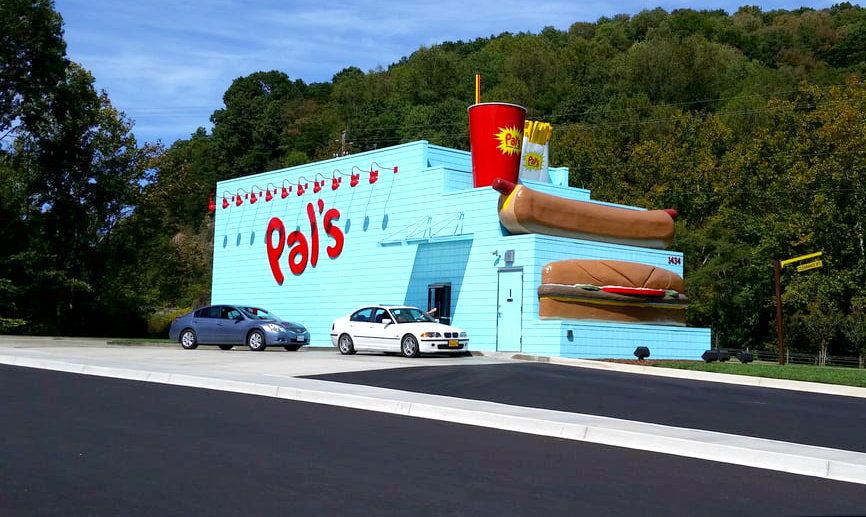It’s no accident
Regardless of your business, its focus is on people: the people you engage as customers, served by the people that you hire. It’s not about what you make, but about who you make it for, and how well the people who represent you do that. Impassioned customer engagement and employee retention doesn’t happen accidentally. It’s earned, day after day, by a devotion to establishing and maintaining your culture with the people who are hired and trained to do so.
![]()
We all should be looking for ways to create the best customer experience by investing our energy in those things which we can control, starting with our employees and their experiences.
As we look to companies that are renowned for their customer service, such as Walt Disney or Zappos, it’s easy to say to ourselves, “Well, if I had the money and resources that those companies do, it’d be easy for me to have a more attractive experience for my customer and employee.” But there are companies much smaller in scope who deliver an amazing customer and employee experience.
How Pal’s Sudden Service succeeds
Located on the Tennessee/Virginia border, Pal’s Sudden Service is a quick-stop restaurant (QSR) with 26 stores that’s physically similar to other such restaurants, excepting that it’s a drive-thru only. However, there are many differences. When cars approach the dual drive-thrus, customers provide their order to a Pal’s employee face-to-face, rather than through a speaker.
This is such a hallmark of Pal’s that their recent advertising campaign was titled “Face-to-Face”, highlighting the speed and accuracy that come from beginning the order process talking to a person rather than a screen, allowing customers to progress through the line faster and resume enjoying their day. Speaking of their speed and accuracy, it’s legendary.
From the time of first contact with a Pal’s employee, the customer orders and receives their order within 30 seconds. By way of comparison, the next closest competitor completes the process in two minutes, four times slower than Pal’s. Now, you might well be thinking, “Great. They’re fast, we can be fast at my business, but only being fast doesn’t guarantee customer satisfaction.” And you’d be right.
It’s about more than just speed
The story of Pal’s transcends speed. Winner of the 2001 Malcolm Baldridge Quality Award — the first restaurant to do so — Pal’s makes a mistake in a customer order only once in every 3,600 orders, reports Harvard Business Review.
In comparison, that’s ten times better than their closest competitor, and the combination of speed and accuracy has won them loyalty from their customer base, as well as being a company worthy of study by competitors and management experts alike.
How do they do it, and how can we apply their methodology to our companies? It all comes down to their approach to their employees.
Retention begins with selection
Pal’s 26 locations employ roughly 1,000 workers. 90 percent are part-time, and 40 percent are between 16 and 18 years old. Given the complexities in managing this segment of the demographic, the hiring process at Pal’s begins with an extensive psychometric screener, a 60-point check to see how well the candidate is aligned with the attitudinal characteristics of Pal’s most talented employees.
“We’re believers that birds of a feather flock together,” said CEO Thom Crosby, speaking to the Harvard Business Review. “If you start having an operation with weak crew training and not a lot of really good leadership by managers, the people who apply there are the same kinds of people. We go the opposite direction.”
Training never stops
The work’s just beginning when employees are hired. At Pal’s, training isn’t a one-time event, but an intense process designed to ensure that all employees can successfully do all of the tasks involved in operating the store, with frequent rechecks to test for proficiency.
Employees new to the company receive 120 hours of training before they are allowed to work independently.
Each of the tasks that they do is accompanied by a certification test, which must be passed as well before they can work on their own.
The training is continuous: daily, in each restaurant on each shift, the company’s training software generates the names of employees that must be recertified in one of their areas of responsibility. Think of these as a form of a surprise quiz for the employee; they complete the brief test, and if they aren’t successful, they must be retrained in that area before they can do it again independently. This occurs for every employee on average 2 to 3 times monthly.
“Human beings go out of calibration, just like equipment”, said Crosby. “We see so many operations that have training and they’re so happy when a trainee can pass a test. Then they sign off on this person as “trained” and they usually don’t revisit that person unless there’s a really severe performance issue.”
By focusing time, energy, and money on ensuring that employees don’t have the opportunity to go out of calibration with the expected standard, or to develop bad habits, Pal’s focuses on not only quality, but also culture in the same stroke.
Staff development is not a one-off event, especially for the part-time or adult learner.
By focusing on your staff as assets to be developed, rather than employees with varying levels of performance based on infrequent or non-existent training, you meet the needs of your customer and demonstrate to your employee that they matter.
Leadership never rests
At Pal’s, leadership is a serious endeavor in coaching employees. All leaders, including the CEO, are expected to spend 10 percent of their time daily teaching a specific skill to a specific employee. “At Pal’s, every leader needs to have a coaching and training target every single day,” said Crosby to Burger Business. “As CEO, I’m not exempt: Anyone is welcome to ask me my coaching target on any day.” This hands-on approach is bolstered by their master reading list, a selection of 21 books spanning leadership classics, alongside modern tomes on quality. These books are discussed at a bi-monthly book study occurring with the CEO and selected management.
This approach is also seen in how they approach their role within the industry. After winning the Malcolm Baldridge Quality Award, the company created its Business Excellence Institute (BEI) as a development arm to provide best practices to others. As a sign of their success, one of their clients, Austin’s K&N Management became the second restaurant winner of the Baldridge award in 2010.
The result of all this? The customers are unswervingly loyal, and the employees stay employed.
In an industry renowned for its turnover rates, employee turnover rate for hourly employees is one-third the industry average.
Among leaders, it’s lower still. Over more than three decades, only seven general managers have left the company voluntarily, and assistant managers have an annual turnover rate of 1.4 percent.
How do we apply this to our individual circumstances? By focusing on the customer through the lens of improving your employees, you receive dual benefit. Your employees satisfy your customer, and you’ve invested in the best walking advertisement for your company that you can: a carefully selected employee who’s been well-trained and coached to take care of your customer.
#WorkForYourWorkforce
Roger is a Staff Writer at The American Genius and holds two Master's degrees, one in Education Leadership and another in Leadership Studies. In his spare time away from researching leadership retention and communication styles, he loves to watch baseball, especially the Red Sox!











































Pingback: 5 Friday Faves – Star Wars Christmas Carols, Jimmy Stewart’s Christmas, Hamburger Joint, Liz Wiseman on Accidental Diminishers, and Pulling Up | Blog – Deb Mills
Pingback: 5 Friday Faves – Star Wars Christmas, Jimmy Stewart’s Christmas, Hamburger Joint, Liz Wiseman on Accidental Diminishers, and Pulling Up | Blog – Deb Mills